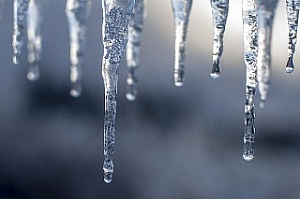Experts from the international SecNet network, created under the auspices of TSU to study environmental transformation, note that the most dramatic changes in climate and ecosystems over the past half-century have occurred in the Eurasian Arctic and Siberia. In this regard, it is necessary to quickly develop adaptation mechanisms to warming, otherwise humanity will face serious socioeconomic upheavals, including famine. The research results are published in the highly rated journal Ambio (Q1) by the Swedish Academy of Sciences.
The authors of the article were 16 scientists from leading research centers in Russia, Norway, the UK, Finland, and other countries in the SecNet network. In the joint work, they presented the results collected during research at several dozen stations in Siberia and the Arctic, including at the most remote bases, such as the Willem Barents Biological Station.
- In Siberia and the subarctic, anthropogenic environmental factors, such as migration, industrialization, and urbanization are added to climatic changes in the natural environment — warming of the atmosphere, melting of permafrost, and reduction of glacier area, - notes Terry Callaghan, one of the authors of the article, SecNet scientific adviser, and professor at University of Sheffield and TSU. - All this entails an increase in the frequency of extreme events that were previously uncharacteristic of Siberia and the Arctic: tundra fires, which were previously very rare, became more frequent, tornadoes began to be recorded in Siberia, and there were more extremely dry and wet periods.
According to the authors of the article, the circumpolar north has become the “hottest” point. Thus, recording the average annual temperature from the Dickson Island station shows that over the past 50 years (1968-2017), the average annual temperature has increased by almost 4°C. Climate transformation entails a change in the environment, and all this greatly affects the life of the indigenous population and brings adjustments to their usual way of life.
For example, reindeer herders note the late establishment of snow cover, which leads to a deterioration of the food supply (freezing of reindeer moss). Often there are strong temperature drops from low (-40°C) to higher (-10 or -15°C), accompanied by strong snowstorms. According to the reindeer herders, deer are often lost in such weather, which they have to look for for a long time. Despite the fact that indigenous peoples are accustomed to harsh natural and geographical conditions, they are forced to adapt to the new environment associated with warming, and so far this has been rather difficult.
- Local and indigenous peoples (especially those that depend on natural resources) have personal experience and inherited knowledge about the environment and ecosystems, - says Olga Shaduyko, coordinator of the SecNet network, one of the authors of the article and director of the TSU International Collaboration Center. - This knowledge and these observations are very important for the development of new research projects and can be useful for interpreting their results. Therefore, several years ago, we invited the indigenous peoples of Siberia and the Arctic to a dialogue. SecNet seminars regularly feature Nenets, Khanty, and Zyryans. The local population is interested in receiving information about what is happening in their area of residence. People need a forecast regarding the further transformation of climate and nature because their health and wellbeing directly depend on this.
Indigenous peoples themselves offer scientists collaboration. For example, in 2019, the SecNet network included Norwegian Sami, who are experiencing the same problems as the residents of the Arctic zone of the Russian Federation. They are ready to provide all possible assistance, for example, to collect data on the study area, because scientists are there occasionally, and local residents are constantly there.
In the article in Ambio, special emphasis is placed on the need for joint research, the results of which are important for developing mechanisms for the adaptation of humankind to global warming and survival in new conditions. Otherwise, socioeconomic upheavals soon await people, one of the first being hunger. According to the researchers, in the absence of an adaptation strategy, negative consequences will also affect residents of prosperous regions who were not affected by fires, floods, and other manifestations of natural disaster, as large flows of migrants will go to these places.
According to the authors of the article, the study of the Arctic, where the greatest changes are observed, and Siberia plays a crucial role in the development of such mechanisms, because this macro-region has a great influence on the formation of the climate of the entire planet.
The authors of the article were leading experts involved in the study of climate, ecology, biodiversity, wetlands and other areas. Among them are Terry Callaghan, a professor at TSU and Sheffield University (in 2007 he received the Nobel Prize as part of the UN International Group of Experts on Climate Change); Margareta Johansson, Lund University scientist, head of the European network for the study of climatic changes in the Arctic, INTERACT; Sergey Kirpotin, director of the TSU Center for Excellence Bio-Clim-Land, the only Russian expert involved in the selection of applications for research under the INTERACT project; and other scientists.

